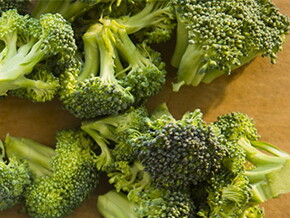
Milk Oligosaccharides (MOs), the third largest solid component of breast milk after fat and carbohydrates and are a special type of prebiotics due to the diversity and complexity of their structures.
MOs feed good bacteria in your child’s gut where about 70 percent of the immune system resides. For this reason, the presence of MOs in formulae is particularly important as they contribute to the development of the immune system, which rapidly evolves in early life.
Discover how MOs work for your child’s immunity!
4 ways MOs work for your infant’s immunity
Milk Oligosaccharides serve as food for probiotics (good bacteria), supporting your child’s immunity:
1) MOs promote the growth of good bacteria
For gut microbiota, MOs act as a substrate with powerful and selective action: they act selectively as food for good bacteria such as bifidobacterial which helps them to thrive, while limiting the growth of disease-causing bacteria i.e. potentially pathogenic strains of Enterobacteriaceae, Escherichia coli and Clostridia.
2) MOs strengthens gut barrier function to reduce risk of infection
To cause an infectious disease, pathogens such as bacteria and virus need to bind to the gut lining. MOs can directly interact with cells on the surface of the intestine and change their shape (i.e., glycan expression) in a way that prevents the attachment of disease-causing pathogens and enhances their removal via clearance in stools.
3) MOs prevent disease-causing bacteria/virus from binding to gut
MOs can be classified into 3 main families based on their structure. Some MOs such as 2’FL, have a surface structure that are similar to receptors on the gut, hence serve as decoy receptors by binding to disease-causing bacteria/viruses. This keeps them away from the gut lining, preventing them from causing infection via gut entry.
4) MOs directly modulates the immune system, reducing risk of allergy
Immune cells known as T-cells can be classified into 2 types: Th1 or Th2. In a young child, his innate immune system is highly inclined towards Th2 response, favoring allergic reactions. MOs can help promote a shift towards a Th1, hence resulting in a more balanced Th1/Th2 response and drive immune maturation, reducing risk of allergic reaction
Do you know the number of MOs and how are they classified?
There are at least 200 MOs, belonging to three major families that have been identified till date, with 2’FL, LNT and 6’SL being the most predominant ones in each family.
Recently, more strains of MO has been discovered. Besides 2'FL, LNT, 6’-SL, DFL and 3'SL were also uncovered. Combined in proportions based on MO ratios in breast milk(1) , they quantitatively account for nearly 50% of the MOs* in breast milk (2-6) and represent the three major MO families (7).
These milk oligosaccharides (MO) now included as part of a groundbreaking formula. This is the first time in history that a milk formula contains MOs from each of the 3 major families
In 2018, the first-ever clinical study of a formula with 5 Milk Oligosaccharides (MO) was launched to study its effects in young children. Initial results have shown the formula to be safe, well tolerated and to support age-appropriate growth up to 4 months of age(8).
MOs also supports digestive health by promoting a soft stooling pattern as in breastfed infants. And last but not least, this formula supports immune health by supporting the development of the gut immune system and shaping the gut microbiome closer to that of breastfed infants(9).
SOURCES:
*43.5% of the sum of the 20 major MOs generally measured in human milk
1. Nestlé Internal Data
2. Samuel TM, et al. Sci Rep 2019;9(1):1-10
3. Austin S, et al. Nutrients 2016:8;8(6)
4. Austin S, et al. Nutrients 2019;11(6):128
5. Sprenger N, et al. Eur J Nutr 2017;56(3):1293-1301
6. Lefebvre G, et al. Front Nutr 2020;7:574459
7. Donovan SM, et al. Ann Nutr Metab 2016;69(Suppl 2):42-51
8. Bauer 2021, abstract at PAS
9. Bauer V, et al. Abstract submitted to Nutrition & Growth Conference 2021


















